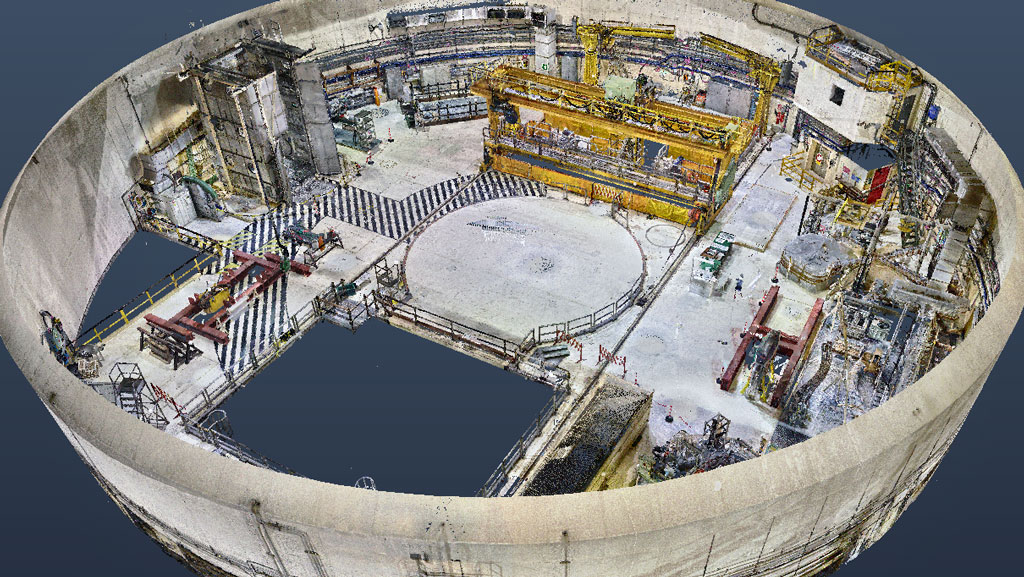3D virtualisation of the reactor building at the Caorso power plant
03 May 2023


Nucleco finished the 3D virtualisation of the reactor building of the Caorso nuclear power plant (Piacenza), after having completed, between 2020 and 2022, the virtualisation of reactor buildings at the Trino (Vercelli) and Garigliano (Caserta) power plants.
The activity was carried out using a methodology developed by the company called Survey 3D, which adopts hardware and software technologies to reconstruct virtual models of complex works and installations, including all physical and radiological data, from a Building Information Modeling (BIM) perspective.
Nucleco's team of specialists first carried out surveys inside the Caorso reactor building with laser scanners and a gamma radiation imaging system, acquiring large amounts of three-dimensional data in a short time and with high accuracy compared to manual surveys. The geometric information was then combined with geospatial data and high-resolution images, reconstructing the location and distribution of contamination sources in the objects available and in the environment as a whole.
Based on the surveys performed, the application of Survey 3D also allowed to generate a point cloud for the reactor building and to complete the 3D virtualisation, including both visual and radiological data for each point. The 3D cloud can be explored and searched, even with Virtual Reality (VR) and Augmented Reality (AR) systems, and allows to perform high-precision measurements, to extract reliable geometric and photographic information, and to take virtual tours inside the building.
The 3D virtualisation of the Caorso reactor building, as with the other decommissioned nuclear facilities, is a functional tool for optimising the various decommissioning design phases, for simulating interventions, also in terms of radiation protection for workers, and for monitoring site operations. Furthermore, by integrating documents, drawings and radiological measurements, the resulting virtual product can also be used as a 3D virtual digital archive in which all information of interest can be dynamically stored and consulted.